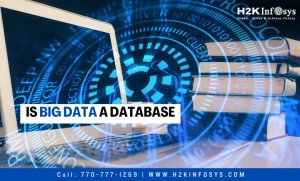Do you want to break into the Big Data field? If the answer is yes, then learn the wide range of Big Data tools. Just like the term ‘Big Data’ refers to, the technology is also mammoth. It’s a growing field and literally too. Also, there is an increasing demand for Big Data professionals. To be a part of Big Data technologies, Hadoop online training can help you gain traction in the niche. However, there are a lot of Big Data tools available in the market which we will closely look at in the blog today.
What should you do to learn Big Data?
- Learn the top Big Data Tools.
- Apart from the above tools, learning a programming language like Python or Core Java is highly recommended. Not only they have widespread libraries, but also, Java is used in developing many Big Data Tools like Hadoop. If you are unable to learn either of the two, trying to get the programming basics like variables, loops, lists, dictionaries, etc can help.
- Now that you have anyway tested the waters in programming languages, you can as well learn basic Linux operating system commands and Shell Scripting. You can start with – Bash Guide for Beginners.
- Learn Structured Query Language (SQL). Mastering SQL makes learning Hive easier. For starters, Hive is a query language for Big Data.
What are the various Big Data Tools?
Big Data is hard to deal with for different reasons. For one, it is the massive amount of data we are dealing with. Some petabytes of data are being generated every day from various sources like social media, internet, hospitals, government organizations, retail stores, e-commerce, etc. Not only storing of such data was a problem using the traditional databases, but also processing such heterogeneous data was a major issue until these Big Data tools emerged.
Lets’s have a look at the top 10 Big Data tools that are ruling the roost:
1. Apache Hadoop
Introduced to the world in 2005, Apache Hadoop is an open-source framework. Hadoop with its distributed file environment is capable of storing any volume of data in its repository. What’s more, it can save heterogeneous data. The Hadoop ecosystem has 3 main components –
- HDFS – Hadoop Distributed File System takes care of the storage part of Hadoop
- YARN – Yet Another Resource Negotiator handles the resource management
- MapReduce – Handles the processing part of the heterogeneous data.
Our 40-hour comprehensive Big Data Hadoop Certification Training at H2K Infosys covers Pig, Spark, MapReduce, HBase, HDFS, Flume, and SQOOP technologies.
2. Spark
Apache developed and open-sourced Spark as a counter to speed up the Hadoop’s computational drawbacks. That said, the Spark data processing engine
has its very own cluster management system. Its in-memory calculation system makes it 100x faster than Hadoop. Moreover, it has separate Spark SQL for structured data processing along with libraries such as MLlib, and GraphX.
3. Storm
Apache Strom is an open-source tool that is easier to use as well as quick in terms of processing speeds.
4. Cassandra
Apache Cassandra is a distributed database system. It can store all kinds of data including structures, semi-structured, and unstructured data. It is well-known for its high fault-tolerance that works on both commodity software and cloud infrastructure.
5. MongoDB
This is an open-source data analytics tool that is portable. It is cost-effective, easy to install tool which is reliable also. It has gained popularity as one of the top Big Data tools for its contribution to the management of unstructured data. MongoDB uses dynamic schemas which means you can store and then combine any kind of data on the go. It is written in C, C++, and Java.
6. Apache Hive
It is an open-source data warehousing system to process structured data in Hadoop. It sits on top of Hadoop to make querying and analyzing job easier.
7. Apache Pig
It is a high-level scripting language used in tandem with Hadoop. Pig essentially enables the data analysts to work on complex data transformations without using either Java or Python. It is ideal to work on any kind of data.
8.Kafka
Kafka is an open-source distributed streaming platform for real-time analytics created by Linkedin in 2011. It is fast, scalable, and highly fault-tolerant. Kafka has higher throughput, reliability, and replication characteristics. Throughput means several transactions an application can handle per second.
9. R-programming
This is an open-source statistical programming language that offers a dynamic development environment.
10. Tableau
It is one of the best data visualization and dashboarding tools out there. Tableau provides valuable insights into raw data and helps the stakeholders in the decision-making process. It is quite popular for interactive dashboards and worksheets.
For more details on Hadoop online classes, check out our website www.h2kinfosys.com.



























